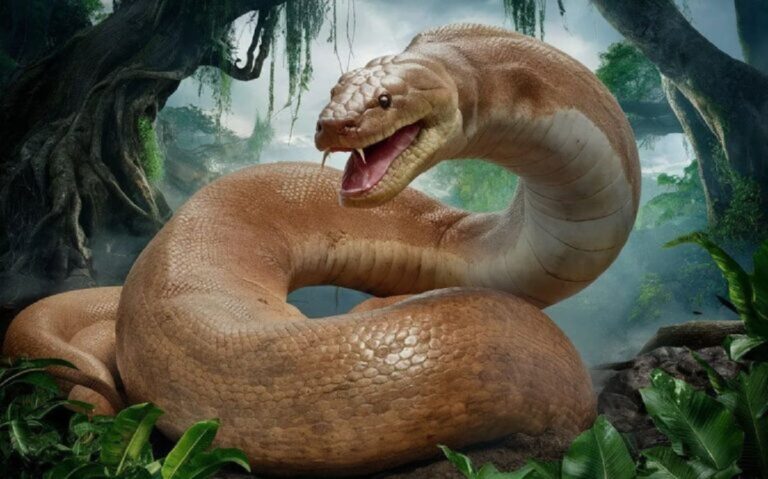A remarkable discovery in India might just rewrite what we know about prehistoric giants. A team of paleontologists has uncovered fossilized remains of what could be the largest snake ever found, Vasuki Indicus, which they estimate reached up to 15 meters (49 feet) in length. This discovery offers a rare look into a world that existed millions of years ago, and the findings are both awe-inspiring and mysterious.
Unveiling a Prehistoric Colossus
The extraordinary find took place at the Panandhro lignite mine in Gujarat, India. While excavating the site, researchers stumbled upon a series of 27 vertebrae belonging to this colossal serpent. Dating back to around 47 million years ago, during the Eocene epoch, these remains allow scientists to peek into a world filled with creatures far different from those we know today.
Estimating the Snake’s Size
By analyzing the size of the vertebrae, the research team estimated that Vasuki Indicus could have stretched between 11 and 15 meters (36 to 49 feet). While these figures carry a slight margin of error, the data was compelling enough to be published in Scientific Reports, where it captured the attention of the scientific community and snake enthusiasts alike.
A Terrestrial Titan
Vasuki Indicus belonged to the Madtsoiidae family, a now-extinct group of snakes that were distantly related to modern species like pythons and anacondas. Judging by its thick, cylindrical body, scientists believe that this giant was primarily terrestrial, living and hunting on land rather than in water like some modern-day aquatic snakes. Its robust body likely supported a hunting style similar to today’s anacondas, lying in wait before ambushing and constricting its prey.
The Snake’s Environment
The warm, lush climate of prehistoric India was an ideal setting for this snake. With average temperatures hovering around 28°C (82°F), the region likely boasted dense forests, creating a perfect environment for a massive predator like Vasuki Indicus. This climate provided ample opportunities for the snake to thrive, offering plenty of prey and a habitat well-suited to its hunting techniques.
A Mystery Wrapped in Fossils
While the fossil discovery sheds light on the snake’s size and habitat, much about Vasuki Indicus remains unknown. Researchers are still working to understand the exact details of its muscle structure and diet. Ongoing studies, including chemical analysis of the fossil remains, may reveal more about how this ancient creature lived and interacted with its environment.
A Discovery That Expands Our Understanding
The unearthing of Vasuki Indicus challenges what we thought we knew about the capabilities and evolution of ancient snakes. This prehistoric giant reminds us that there are still vast mysteries hidden in the earth, waiting to be uncovered. As researchers continue to explore these fossils, Vasuki Indicus might reveal even more secrets about the ancient world and its inhabitants.
The discovery serves as a humbling reminder of nature’s power and complexity—and it opens the door to further understanding how these extraordinary animals once ruled the land.






